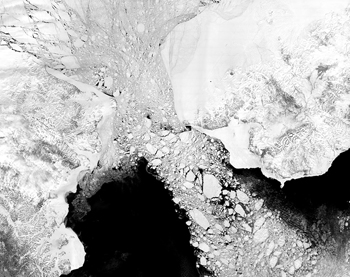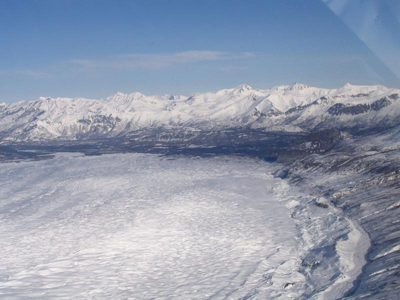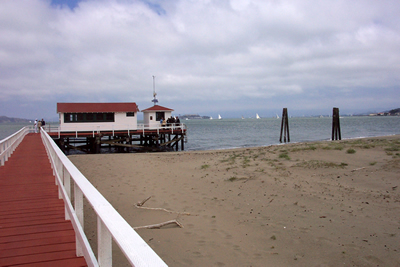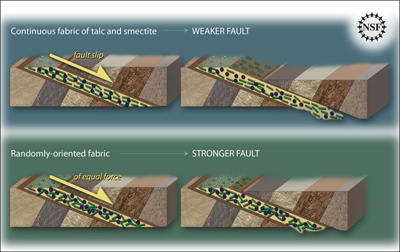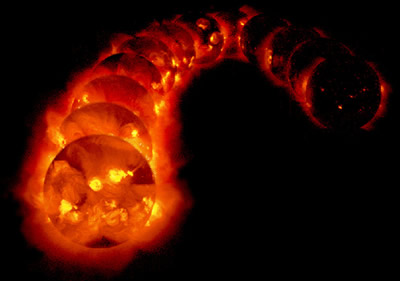Click on image for full size
Image courtesy of NASA
Global Ice Age Climate Patterns Influenced by Bering Strait
News story originally written on January 10, 2010
Sometimes, a small change in the Earth can lead to a big change in climate.
A new study shows that changes in the Bering Strait might have affected ocean currents and climate worldwide thousands of years ago.
The Bering Strait is a narrow waterway between Russia and Alaska. It connects the Atlantic and Pacific Oceans.
Scientists used a computer model to study how the Bering Strait affected climate in the past. In the model, ice sheets grew when climate cooled. With so much water trapped on land in ice sheets, there was less water in the ocean so sea level was lower. Lower sea level meant that the Bering Strait was nearly closed. It was land, not ocean, between Russia and Alaska.
Without a connection between the north Atlantic and Pacific, ocean currents changed. A current carried warm water from the tropics to the north Atlantic. The warm water allowed the ice sheets to melt a bit. The water from the ice sheets flowed into the ocean and sea level rose. Higher sea level reformed the Bering Strait.
With the Bering Strait, the ocean currents changed again. The warm water was no longer brought from the topics. This made the north cooler. The ice sheets grew again and sea level dropped. Again, the Bering Strait mostly closed and this changed the ocean currents.
The pattern was finally broken about 34,000 years ago, when Earth became farther from the Sun during northern winter. This caused temperatures to be so cool that the ice sheets grew even when the Bering Strait closed.


